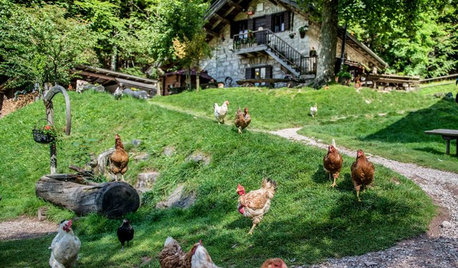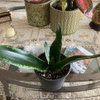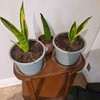'Splendid Sansevierias'; the book
User
17 years ago
Related Stories

SMALL SPACES11 Design Ideas for Splendid Small Living Rooms
Boost a tiny living room's social skills with an appropriate furniture layout — and the right mind-set
Full Story
GARDENING AND LANDSCAPING8 Splendid Side Yard Designs
Treat your skinny side yard like the beautiful green corridor it wants to be, with these verdant garden designs as inspiration
Full Story
DECORATING GUIDES8 Splendidly Redesigned Home Basics We All Use
Whether you find God or the devil in the details, these new takes on utilitarian items for the home are simply divine
Full Story
DECORATING GUIDESRooms Take a Page from Book Wallpaper
Turn your walls into well-read companions even without a library, using the novel design idea of book wallpaper
Full Story
TRADITIONAL HOMESHouzz Tour: Historic Coastal Home Is Rescued From Neglect
A designer lavishes TLC on a splendid Normandy revival house in Laguna Beach, embracing its original style in the renovation
Full Story
LIFESimple Pleasures: Cozy Up Your Reading Spot
Losing yourself in a good book is even better with these ideas for reading comfortably all around the house
Full Story
HOUSEPLANTSMother-in-Law's Tongue: Surprisingly Easy to Please
This low-maintenance, high-impact houseplant fits in with any design and can clear the air, too
Full Story
POOLSSolstice Daydream Break: 10 Breathtaking Swimming Pools
Put Jack Frost's nipping out of mind with a virtual dip in 10 covetable Australian swimming spots
Full Story
HOMES AROUND THE WORLDMy Houzz: A Family’s Rustic Refuge for Travelers in the Italian Alps
High up in the Dolomites, a mountain dairy farm and restaurant offer up old-fashioned hospitality, memories and tranquillity
Full Story
DESIGNER SHOWCASESSan Francisco Decorator Showcase: Fresh Takes on Bold Design
The 2016 show house, opening Saturday, offers youthful refinement in a new locale
Full Story








pirate_girl
dufflebag2002
Related Professionals
Eden Prairie Landscape Architects & Landscape Designers · Westwood Landscape Contractors · Danvers Landscape Contractors · Harrisburg Landscape Contractors · Lehigh Acres Landscape Contractors · Long Branch Landscape Contractors · Mashpee Landscape Contractors · Rio Linda Landscape Contractors · St. Louis Landscape Contractors · Wilton Landscape Contractors · Sun Valley Landscape Contractors · Baileys Crossroads Landscape Contractors · Raytown Landscape Contractors · Bloomington Window Contractors · Prairie Village Window Contractorsvhinkes
norma_2006
sansitive
UserOriginal Author
dufflebag2002
dufflebag2002
UserOriginal Author
dufflebag2002
melissa_thefarm
dufflebag2002
dufflebag2002
dufflebag2002
hadrian
tf.-drone
hadrian
brodyjames_gw
tf.-drone